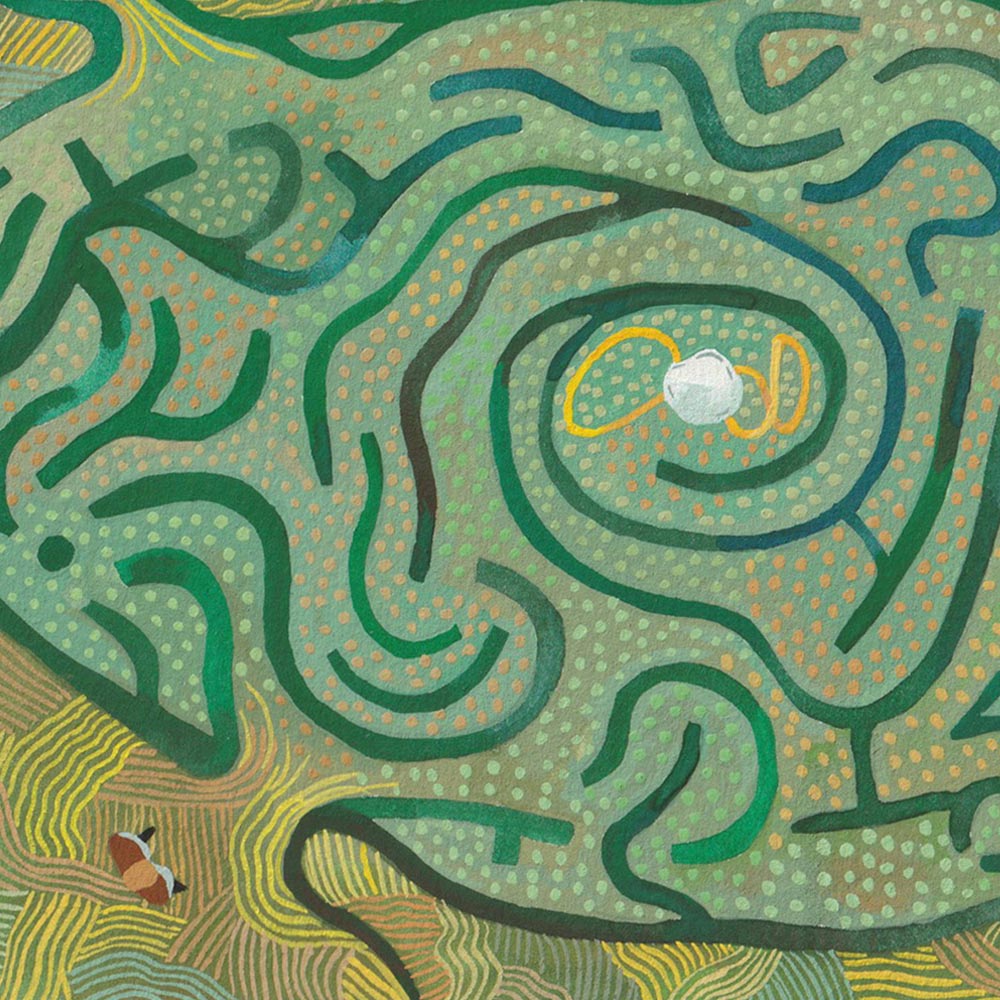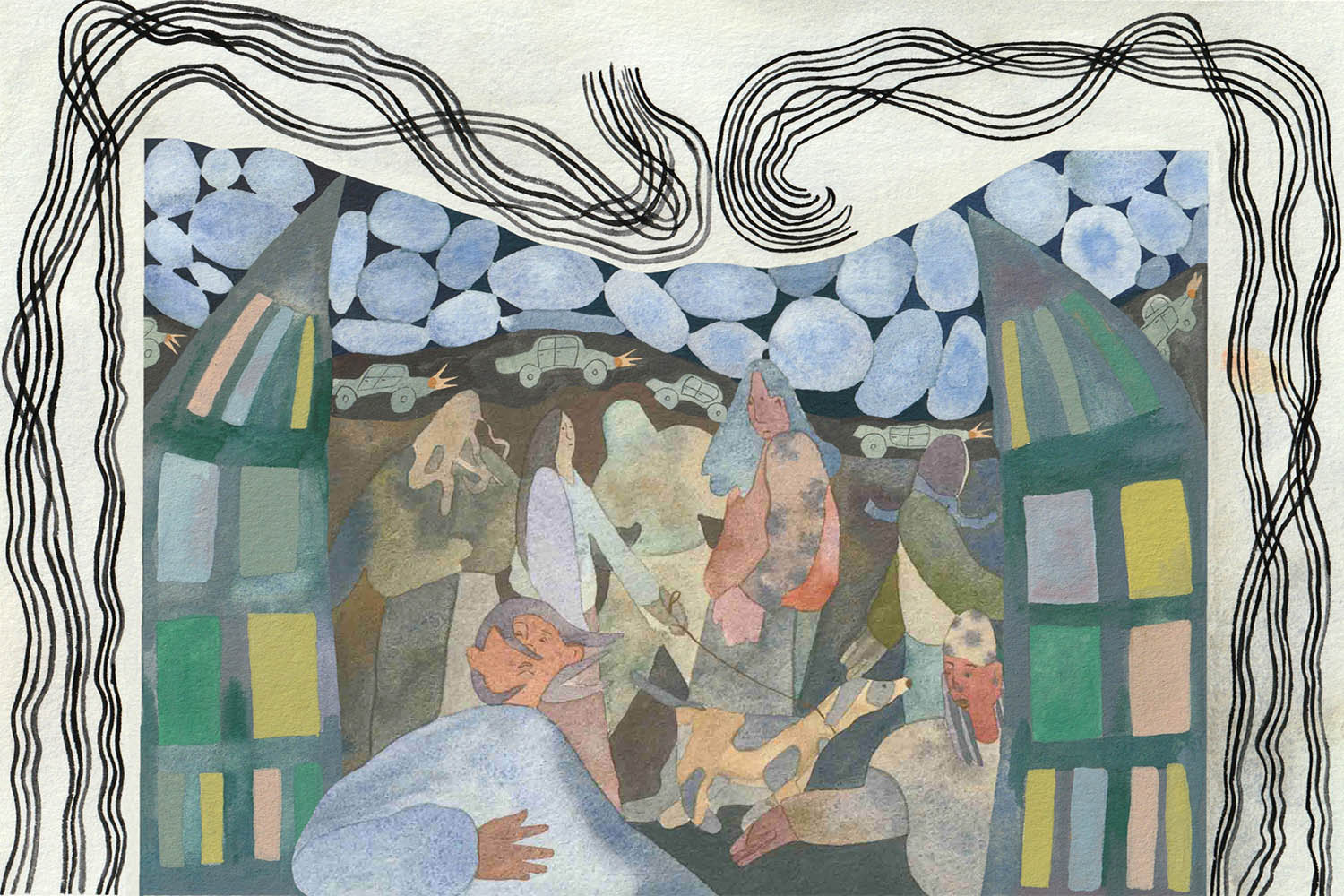

It was mid-March in Toronto when the pandemic officially arrived. A globe-spanning scavenger hunt for personal protective equipment (PPE) had quickly become the medical community’s go-to sport. Supplies of gloves and masks, meant to help healthcare workers do their jobs safely, were dwindling, and orders arrived with just a fraction of what was expected. The search was on for replacements—from anyone, anywhere, anything to fill the gap.
Inside Toronto’s University Health Network (UHN), which includes Toronto General and Toronto Western among its hospitals, Rebecca Repa led the charge. Repa had only just joined UHN in December 2019 as the executive vice president of clinical support and performance. But with a global pandemic on her doorstep, Repa and her team were now tasked with procuring their hospitals’ much-needed PPE.
At first they looked locally to dental offices, construction sites, and schools—shuttered industries with their own dormant stocks of gloves and masks—giving UHN a few weeks of breathing room early on. But with cases on the rise through March and into April, and stock still running low, it soon became apparent they would have to search farther afield. “It was 100 percent the Wild West,” Repa recalls. Suddenly, it seemed as if everyone was selling gloves, masks, and other supplies—somebody who knew somebody, a friend of a friend. UHN was getting hundreds of leads each week, chasing them down around the clock, making calls to Turkey at 4:00 a.m. But how would they know who was legit? If their products actually worked? If they could be trusted to keep people safe? “It was really hard to be able to have any confidence, ever, that anybody you were talking to had the ability to deliver on the goods—which is so unusual in my whole career,” Repa said.
UHN did, eventually, get the goods—more than $31-million worth from that first wave into September, accounting for 11.7 million individual supplies, from sanitizer to shields. But what about those who couldn’t?
For decades, the federal government has maintained a national emergency stockpile of medical supplies—the National Emergency Strategic Stockpile, or NESS. It is a backstop, an insurance policy, a cache reserved for provinces and territories whose own supplies have run out. It is supposed to be the stockpile of last resort. But as the pandemic swept across the country like wildfire, sparking outbreaks in some of Canada’s most populous cities, it became clear the stockpile had nowhere near enough to match the pandemic’s high demands—just two million gloves, 94,000 surgical masks, and 100,000 N95 respirator masks according to The Globe and Mail, far below what Ontario alone expected to use in a week. In the House of Commons this past spring, health professionals and politicians alike wanted to know why.
The answer appears to be as simple as it is unsatisfying: the national stockpile was simply never meant to handle a once-in-a-century pandemic as serious and as widespread as what we’ve experienced this year. Rather, the stockpile is the creation of a wholly different era concerned with wholly different threats, shrouded in a level of secrecy at odds with public health. Jack Lindsay—an emergency management expert and associate professor at Brandon University who was a disaster management specialist for Manitoba’s provincial department of health from 1999 to 2005—likens the stockpile to a security blanket that was probably very good in the 1970s, but is too small and outdated to adequately handle all of today’s concerns. The government can’t get rid of it, of course, but it can’t seem to allocate the funds required to keep it operating at adequate levels either. “The NESS lost its relevance compared to the kinds of hazards that we now face,” Lindsay said. That’s not to say the stockpile no longer has a role. But with Toronto now in the midst of a second wave and cases rising across the country, the nature of that role — and how much the public should know — is very much up for debate.
Suddenly, it seemed as if everyone was selling gloves, masks, and other supplies—somebody who knew somebody, a friend of a friend.
It’s likely you would have remained blissfully unaware that Canada even had an emergency stockpile were it not for the global pandemic that came knocking on the country’s door. Somewhere in or around Ottawa—the exact location is secret, a matter of national security—is the stockpile’s central depot, one of eleven now spread across the country. If you were to imagine the final scene of Raiders of the Lost Ark, Jack Lindsay says you wouldn’t be that far off: a warehouse with shelves that recede into the horizon, row after row of wooden crates stacked stories high, untouched for years, their contents the stuff of mystery and intrigue. (In an email, the government had a less imaginative description: “The NESS warehouses are similar to most other warehouses that contain boxes of product, and vary in size and capacity.”) A mix of warehouse personnel, biomedical technologists, policy analysts, logistical experts, and other public servants staff the program year round. The stockpile’s other warehouses are located in strategic locations, so that wherever an emergency might occur, be it a natural disaster, terrorist attack, or infectious outbreak, the government can deploy supplies and equipment within 24 hours. The exact nature of those supplies—what kind, how many, how old—is also a closely-held secret, but we know the stockpile broadly includes such supplies as ventilators, vaccines, and x-ray machines, as well as masks and gloves.
If all that secrecy seems ill-suited to discussions about public health, you have the Soviet Union to thank. The NESS is, in fact, the creation of a wholly different era, when the threat of nuclear armageddon loomed large. It was the late 1940s, the beginning of the Cold War. A catastrophic nuclear attack was not out of the question, and Canadian authorities had to be prepared. At first, the country’s provinces took matters into their own hands with bespoke response plans and emergency preparations. Then the federal government got involved. Known then as the National Emergency Stockpile System (NESS), this federally managed stockpile would contain all of the supplies necessary to deal with the fallout from a nuclear attack—mobile hospitals, medicine, disaster kits, testing labs, and treatment centres. When the NESS was created in 1952, it was given $9 million to purchase supplies meant to last, in case of emergency, for three weeks. As the nuclear threat grew, so did the NESS budget, doubling to $18 million by 1961. But as the 1960s wore on, and nuclear armageddon failed to materialize, investment in the stockpile slowed, and the equipment and supplies it contained were made available for use during peacetime disasters, too.
Decades passed, and the NESS’ mandate widened to handle natural disasters like floods and fires, and industrial accidents such as mine collapses. It was renamed, slightly, and became the National Emergency Strategic Stockpile (still NESS). The stockpile took on an international role, and began sending supplies to places like Vietnam. Then came the Oklahoma City Bombing, sarin nerve gas in Tokyo, the attacks on 9/11, and anthrax in the mail. SARS struck in 2003 and 2004, followed by H1N1 in 2009. Pandemic preparedness was now another responsibility to add to the NESS’ list.
And then, for more than a decade, nothing happened. The ventilators sat unused and outdated. Gloves and masks expired, were disposed of, and never replaced. A year before the pandemic, the CBC reported that two million expired masks and 440,000 expired gloves from a now-shuttered NESS warehouse were thrown out. Dr. Kevin Smith, the president and CEO of UHN, told the House of Commons in May that ventilators “bought after SARS, 17 years ago, are not the state-of-the-art material of today.”
Even if the NESS had been better stocked, Anna Banerji said it still wouldn’t have been enough to handle a pandemic so unprecedented, the kind that only comes along every hundred or so years. “I think they could have done a better job. But it’s hard to prepare for something as massive as this,” said Banerji, an infectious disease expert and the director of global and indigenous health within the University of Toronto’s faculty of medicine. “I don’t think you could have prepared for this.” In fact, no one in the world did. By the time the virus began to spread throughout China and beyond, there was only so much anyone could do.
In Burlington, family physician Jennifer Kwan heard from relatives in Hong Kong in March that masks were in short supply. “Initially, they were asking me to send some over to them. But then later, they were the ones offering to send them back to us,” Kwan recalled. The delivery date for an order she had placed of cloth surgical masks was pushed further and further back, until it was cancelled altogether. A patient offered to donate spares.
Rebecca Repa and her team received 800,000 donations too, but it was only a fraction of what UHN’s hospitals ultimately needed, and the search for commercial suppliers was exhausting. “Oh my gosh, it was so stressful,” said Repa. “We had these highs where we would think we found things and then they would not pan out and then we would lose it.” She remembers standing in her kitchen one night trying to take the lids off tiny personal bottles of sanitizer, thinking they could refill the empty pouches inside the dispensers on the hospital walls. It would be an arduous task, but what choice did they have? Replacement pouches were nowhere to be found.
While healthcare workers across the country embarked on harried quests to find far-flung caches of PPE, the House of Commons tried to figure out why the country’s national emergency stockpile had so little in the first place. A better equipped stockpile wouldn’t have prevented the pandemic, but access to more supplies could have better protected frontline workers in the pandemic’s earliest weeks. “They were never given the support and the money to maintain it at a level that I’m sure we all would have wanted,” said Jack Lindsay of the stockpile. “We’ve always left emergency management very underfunded.”
On April 1, still early in the pandemic, Health Minister Patty Hajdu agreed. “I think federal governments for decades have been underfunding things like public health preparedness,” she said during a press conference. Sally Thornton, a vice president at the Public Health Agency of Canada, told MPs the stockpile had a small staff of 18 people—the government wouldn’t say what that number is today—and a budget of $3 million per year for salaries and operating costs. According to the government, that amount has remained about the same since 2012-2013, and is actually lower than at least one provincial stockpile’s budget, The Globe and Mail reported. “With hindsight, one could always like more,” Thornton said. Whatever future risks the NESS is tasked with preparing for, she hoped the budget would be “proportionate” to what’s required to address them.
When asked why the NESS wasn’t better prepared for those risks already, Minister Hajdu said in May that the stockpile “was never meant to accumulate personal protective equipment but rather other kinds of treatments for all kinds of biological events”—the kinds of rare, niche, and hard-to-find medicines used to treat smallpox or anthrax. Those comments were echoed by the country’s chief public health official, Dr. Theresa Tam. MPs struggled to reconcile that view with the federal government’s own pandemic influenza preparedness report from 2006, co-authored by Tam herself, which suggested Canada maintain a 16-week supply of PPE. That responsibility, Tam clarified to the House of Commons, was intended to be shared between all levels of government, and was not purely the federal government’s domain. But she didn’t disagree that things could be done differently. “Going forward, I would like to see support for the national emergency stockpile system and the public health system writ large,” she told MPs on May 19. “The Canadian public and the government can decide how much of this they would like us to actually stockpile going forward. We’re going to learn a lot.”
The challenge is that it’s hard to have a public discussion about a stockpile that operates in secrecy, largely out of the public eye, and that few medical professionals seem aware even exists. Sandy Buchman, president of the Canadian Medical Association, told MPs on April 7 that, only one in 10 physicians were even aware of a government source of supply. Jennifer Kwan, the Burlington family physician, said she too was unaware the stockpile existed before the pandemic arrived. The reality is that most of what we know about the modern-day NESS—its contents, budget, staffing, and management—come from a handful of reviews, audits, and reports published from 2004 to 2011. They paint a picture of a program with an ever-expanding list of priorities, but not the budget to match, and with little insight into its own contents or the status of its stock. A 2011 evaluation conducted by the Public Health Agency Canada found expired products and supplies that dated back to the 1960s—equipment bluntly called “unsafe to use by modern medical standards” and “no longer relevant to modern medical practice.” How much of this remains relevant today is hard to say. Over months of evidence given before the House of Commons, the agency offered few details not already known—though in an email, agency spokesperson Eric Morrissette did confirm the stockpile now has “a computerized inventory management system that lists all holdings, quantities, expiry dates, and other relevant product information.”
“They’re citing national security. But I think the lack of transparency is a national security risk,” said the University of Toronto’s Banerji. If the NESS was more transparent, she argued, it would give experts outside the government a chance to provide feedback, and healthcare providers better insight into the kind of support they can expect the government to provide. “We need to know, what do they have? How much do they have? [When] will it expire? So that, as a country, we’re more prepared. That shouldn’t be hidden under a cloud.”
The stockpile is the creation of a wholly different era concerned with wholly different threats, shrouded in a level of secrecy at odds with public health.
Over a video call from her UHN office, Rebecca Repa shows off the dashboard that COVID-19 built. It’s an internal tool that helps staff across UHN’s hospitals keep track of available supplies. Before the pandemic, low-cost, high-volume products like gloves, masks, sanitizer, and soap would never be tracked with the kind of scrutiny reserved for higher-value supplies. The pandemic changed that. Take, for example, N95s. “We needed to be able to understand how many we were using daily,” Repa said, “[so] we knew how long our runway was going to be before we would run out.” When stock dips below a 30-day supply, it’s flagged bright red: high-risk. Anything over 60 days—two months—is coloured green. In the last week of October, with Toronto in the midst of its second wave, the dashboard showed UHN had stockpiled around a month’s-worth of gloves, and six months-worth of N95s, a marked improvement over the pandemic’s early weeks. Repa says their goal is to have at least 60 days worth of PPE, and up to 120 days where possible.
Scale that up to a national level, however, and stockpiling gets more complex. The national stockpile not only has to ensure it has enough supplies, but to ensure those supplies are used before they expire. It’s one of the inevitable challenges of preparing for emergencies that may never come to pass.
The pandemic has already changed some things. The national stockpile was given a $5-billion budget to acquire PPE and other equipment and supplies in bulk in collaboration with the provinces and territories, and has “evolved significantly over the past nine months, growing in space and personnel,” wrote Public Health’s chief spokesperson, Eric Morrissette, in an email, without going into specifics. The government says its warehouses are now receiving daily shipments of PPE and other medical supplies and equipment, and distributing it almost as fast. In addition to the 11 warehouses operated by the agency, the government says it now has another “dozen or so” through third-party warehousing contracts with partners such as Amazon to handle the glut of PPE.
Long-term, however, the most commonly suggested solution has been to open the stockpile up. Ian Culbert, the executive director of the Canadian Public Health Association, has suggested that the federal government could sell stock to the provinces and territories each year, ensuring the national stockpile is continually replenished, and older stock gets used. “It’s extremely wasteful to have a national stockpile of equipment that has expiry dates,” Culbert told MPs in April, later adding that it was time to “rethink what the national emergency stockpile should look like in the future to respond to the evolution of pandemics.” Writing in the Canadian Medical Association Journal in June, Scott Laing and Ellen Westervelt proposed that the stockpile be reimagined as an independent crown corporation that would both stockpile supplies and sell supplies to hospitals for routine use, and be able to track and forecast future demand as a result. “Selling and refreshing supplies to maintain a minimum stock for emergencies could ensure adequate supply and minimize wasted resources,” they wrote, urging the government “to act now to be better prepared for the next emergency.”
“The ultimate outcome would be that you didn’t run out of stock,” Laing said in an interview—something that would probably take “several” pandemics to fine tune. “It’s not every day that you have demand like we have right now.”
The country’s auditor general is now reviewing how the federal government—including the Public Health Agency of Canada—handled demands for PPE, and the Health Minister has also promised the government would review how the stockpile is managed. The results of both reviews are still to come. “We like to only have one monster under the bed at a time,” Lindsay said. We tend to focus on the hazards we’re most familiar with, and not necessarily the ones that are increasingly likely to harm us the most. But if this year has taught us anything—with its relentless wildfires, hurricanes, and a pandemic to top it all off—that’s just not the world we live in anymore.
Back at UHN, the second wave is already looking much different than the first. This time last year, in the pre-COVID days, Repa’s hospitals might have used about 60,000 gloves in a day. Now, glove use has doubled, and could be as high as 140,000 on peak days when Repa spoke in late October. “Before when we were just-in-time, we wouldn’t have had any on hand,” she said. Now, supplies are stockpiled just-in-case—“because none of us had the confidence that we will have the supplies we need when we need them.”










